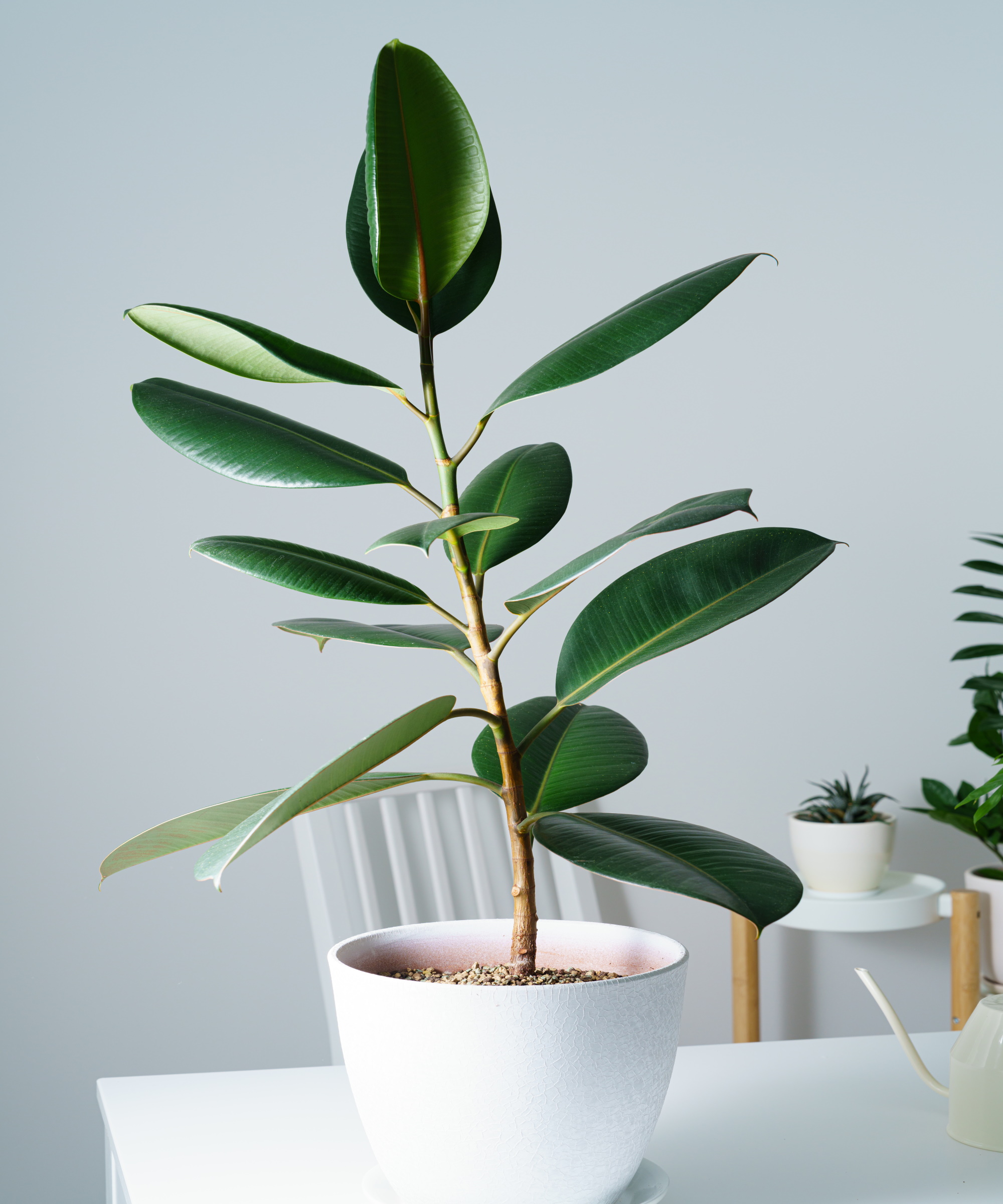Why is my rubber plant dropping leaves? House plant experts advise on stopping the drop
Find out why these popular houseplants shed their leaves and how to prevent it from happening


Is your rubber plant dropping leaves?
One of the best fig trees to grow, rubber plants are adored for their height, impact and large glossy leaves, these tall indoor plants make a real statement in any room. Low maintenance, fast growing and pretty easy to propagate, they are brilliant plants for novice growers and highly rewarding too.
All these easy-going friendly giants need is bright – not direct – sunlight, moist soil and a steady room temperature of 59-77℉ to keep them happy. In fact, they are one of the most widely grown houseplants, in part due to their sheer good looks, but also for their abilities to clean the air and help reduce stress.
Rubber plants – also known as ficus elastica – do have their quirks, however. One annoying habit is they occasionally shed their leaves. So how do you avoid this indoor plant mistake and what are the most likely causes? We asked the professionals for their thoughts and advice, so you can be well prepared.
What causes a rubber plant to drop leaves?

It can be real shock when an elegant, statement plant such as a rubber plant suddenly starts to drop those magnificent, glossy leaves, but the key is to understand exactly why and when it happens, so you can take swift, appropriate action.
‘Rubber plant (Ficus elastica) may drop some leaves when it gets stressed,’ explains plant expert Justin Hancock.
‘While it’s pretty straightforward, it can be challenging to diagnose since different stressors can all cause leaf drop. First look at watering – both too much and too little – can cause leaf drop.
Design expertise in your inbox – from inspiring decorating ideas and beautiful celebrity homes to practical gardening advice and shopping round-ups.
'Then look at environmental changes, such as a quick increase or decrease in light, temperature, humidity, etc. Stop the drop by addressing the stress. Ensure your plant is getting sufficient light and water, and it should start holding its leaves again.’

Absolutely passionate about plants (indoors and out), Justin is a consumer horticulturist who’s been getting his hands dirty in the industry for more than 25 years. Before joining the Costa Farms team 2013, he was a garden journalist and broadcaster on local and national networks.
Could over or under watering cause rubber plant leaves to drop?
As with many indoor plants, knowing how often to water a rubber plant can prove tricky. Paris Laticata from indoor plant specialists The Sill shares this advice: ‘Watering your Ficus before it’s ready or even letting it remain dry for a long period of time after it has dried out can contribute to leaf loss. Be sure to allow most of the soil to dry out between watering, but refrain from letting it remain dry for too long. Also make sure you aren’t watering this plant very frequently, and always check the moisture of the soil prior to watering to ensure at least 50% of the soil volume has dried out.’

Paris has been with The Sill for almost 5 years and heads up Plant Education and Community. A self-taught plant expert with more that 10 years' of experience growing houseplants, she currently maintains an indoor garden of over 200 plants in the northeast. Her passion is making plant care more digestible for budding plant parents and sharing the many benefits of having plants indoors.
Can the wrong-sized containers cause rubber plant leaf drop?

Besides looking at the plant care basics – watering and light levels – there can be other, less obvious reasons, these magnificent houseplants can decide to shed their leaves. Plant expert Paris highlights two of them. ‘When plants are left in containers that are too small for too long this can inhibit the roots from growing. Ultimately this can lead to leaf drop if there aren’t enough roots to store energy and support the growth of the plant. Alternatively, it can also happen if the soil has degraded and become nutrient deficient.’
Can pests cause rubber plants to drop leaves?
Another possible cause is that the plant is suffering from harmful pests. Paris continues: ‘At times, leaf drop that isn’t contributed by the environment or care can be from insect feeding like thrips, spider mites and mealybugs. Be sure to thoroughly inspect your plant if you ruled out that the environment and care is adequate and treat accordingly.’
FAQs
What should you do when rubber plant leaves begin to droop?
This is usually down to a water related issue, so take a closer look at the condition of the soil around your plant. If the leaves look and feel thin, chances are the soil will be bone dry and the roots stressed from searching for water. Soak the potted plant in a bowl of water for around 15 minutes. This will give the plant a chance to rehydrate. Allow to drain thoroughly before popping back in position.
If your rubber plant’s foliage is droopy and turning yellow (or brown) , overwatering is the most likely problem. Carefully remove the plant from its pot, tease away the sodden compost and repot using fresh. Refrain from watering until the soil feels dry to the touch.
How do you encourage new leaves on a rubber plant?
Getting the light levels right will encourage your plant to produce fresh, new leaves. Ideally this robust indoor plant needs around 6 to 8 hours of bright but not direct light daily. Avoid strong sunlight falling on the leaves as this can cause scorching and long term damage.
Regularly wiping the leaves clean with a damp, soft cloth will also help the plant photosynthesise efficiently so any stored energy can aid healthy new growth.
So, as we can see, rubber plants drop leaves due to stress: address the stress and you should be able to stop the drop. Remember, too, that you can propagate rubber plants, which gives these plants another reason to be popular.

Journalist Jill Morgan has spent over 20 years writing and editing gardening, interior and property features. Titles she has worked on include The English Home, House Beautiful, Ideal Home, Houzz and Modern Gardens and she writes regularly for H&G as a Contributing Editor. Whilst she is a dab hand at renovation projects and DIY, she is happiest when out digging in the garden or planning a new border.